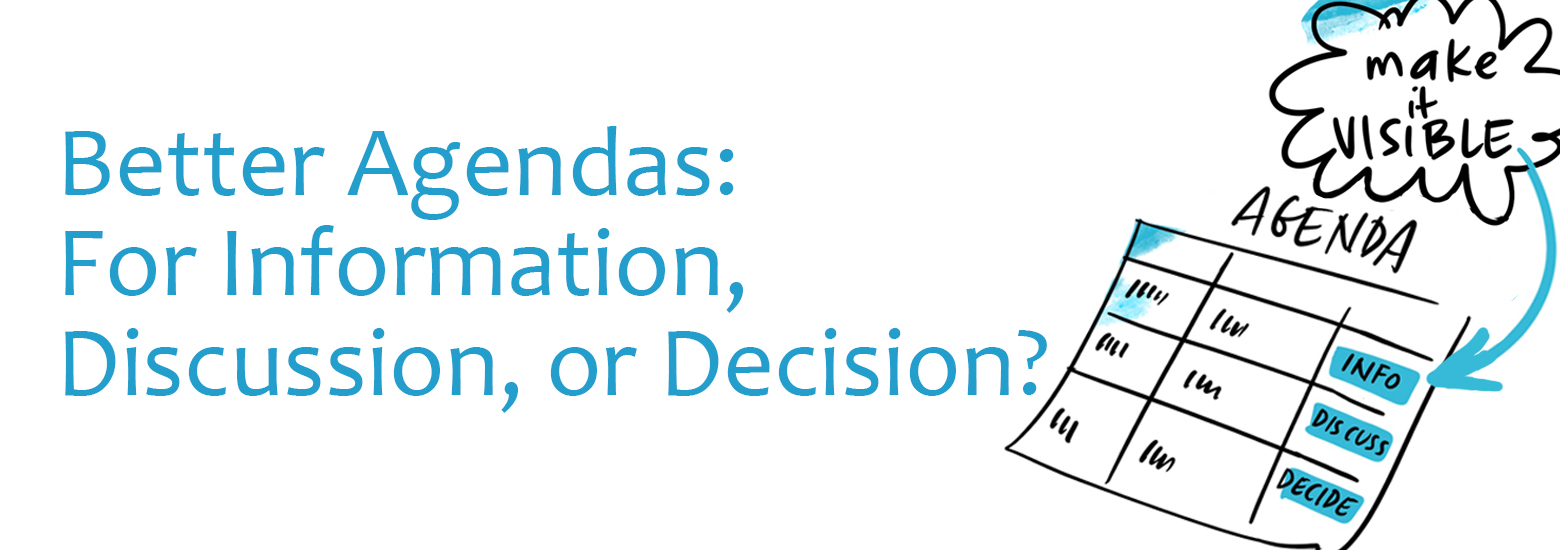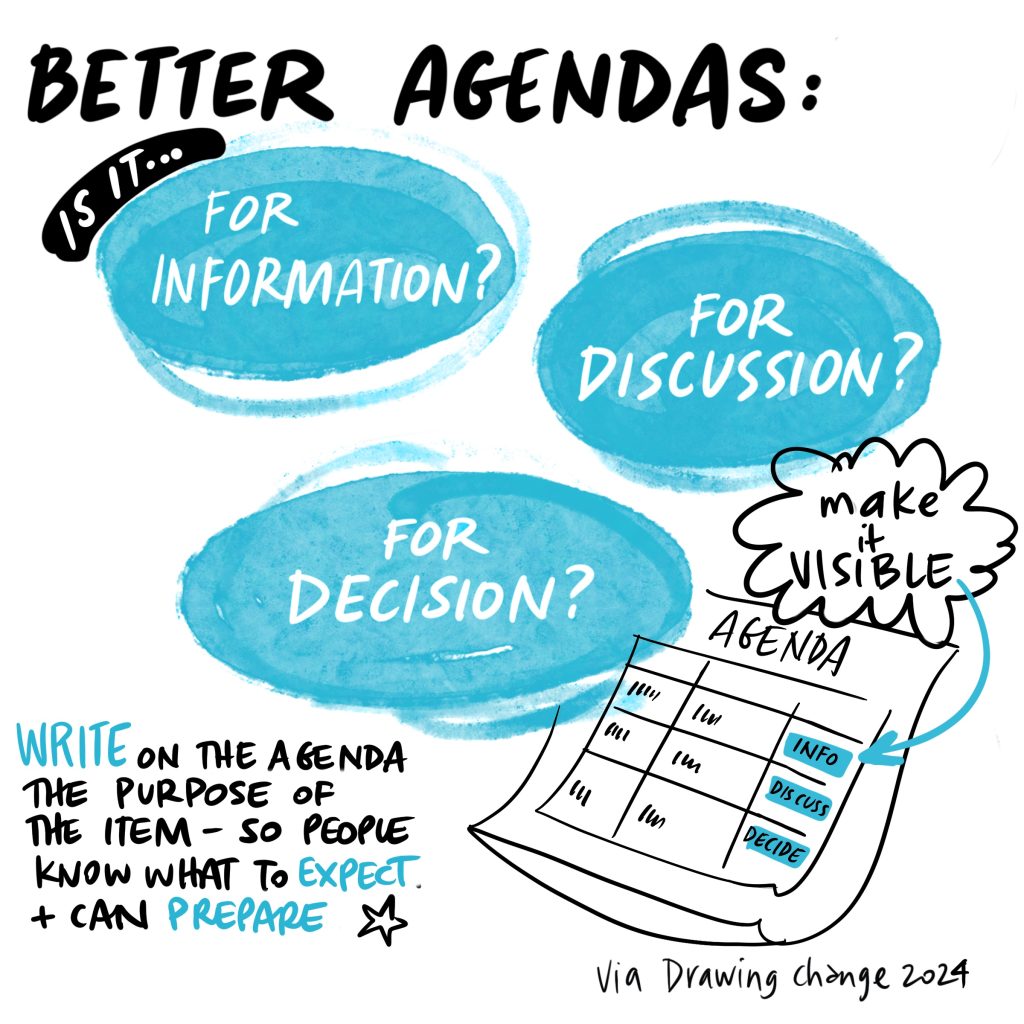
Better meetings in 15 mins: For Information, Discussion, or Decision?
Meetings getting off-topic? Having a hard time moving forward? Voices being cut off, and things feel rushed? Here’s a framework that might take 15 minutes to implement and makes planning meetings easier. Let people know if the agenda item is for information only, for discussion, or if it’s time to make a decision.

Facilitating better meetings: help people prepare and know expectations
For information: Information might be presented out loud, or by tabling a report, or reminding people about something sent by email. Don’t fall into the classic “this meeting could have been an email” here by reading something out loud word for word. There’s an important balance – if topics are more complex, make time for discussion.
Discussion: People are informed and ready for dialogue. The facilitator/chair can plan the agenda for when the group has good energy. Big discussion as the first item? Or after a coffee break? Online, try the initial 5 minutes in pairs/groups of four, then come back to the full group more prepared for a full discussion.
It can be tempting for the meeting chair/facilitator to rush this step and cut off voices quickly to move to a decision. Sometimes, for complex topics, we can help pause the feeling of urgency by letting the group know if or when a decision needs to be made: there might be more than one discussion stage, or, more ways of sharing feedback offline before the step for a decision.
Decision: When it’s time to decide. Tip #1: Be honest and clear about how decisions are made. Is it majority voting, consensus, or a different process? In settings where there isn’t equal decision-making authority, be clear when a group is being asked for its input, and isn’t making the ultimate decision. Tip #2: A decision doesn’t mean discussion until “100% in agreement”. Groups can move ahead on decisions in healthy ways, especially when concerns are heard and acknowledged. We get a better result when people can share the degree to which they agree or disagree with a proposal, so the group can change the proposal and make it better.
To implement, add an additional column to your agenda for information, discussion, or decision. For more details, I like the article and sample agenda by Roger Schwarz in this HBR article.